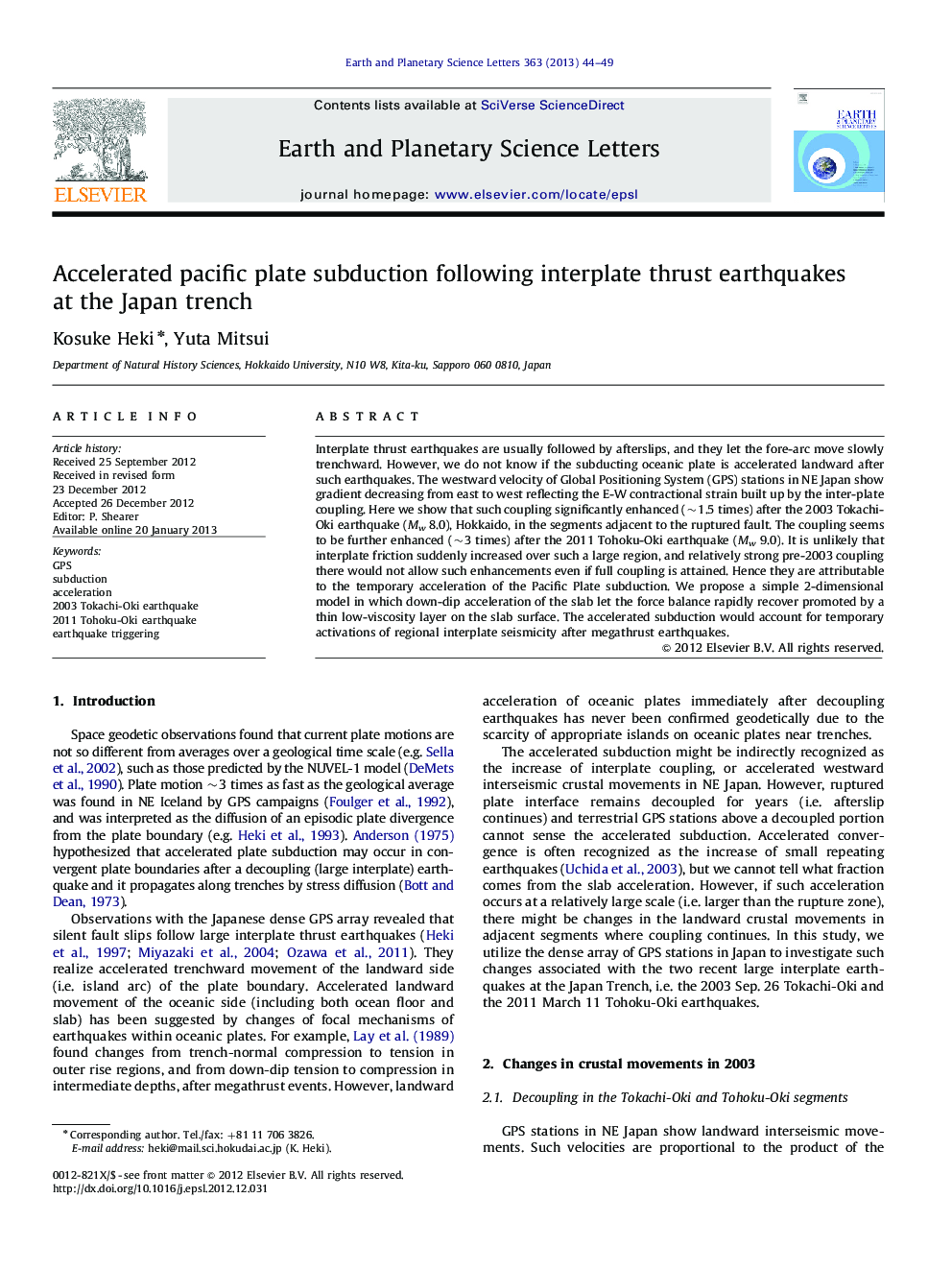| Article ID | Journal | Published Year | Pages | File Type |
|---|---|---|---|---|
| 6430426 | Earth and Planetary Science Letters | 2013 | 6 Pages |
Interplate thrust earthquakes are usually followed by afterslips, and they let the fore-arc move slowly trenchward. However, we do not know if the subducting oceanic plate is accelerated landward after such earthquakes. The westward velocity of Global Positioning System (GPS) stations in NE Japan show gradient decreasing from east to west reflecting the E-W contractional strain built up by the inter-plate coupling. Here we show that such coupling significantly enhanced (â¼1.5 times) after the 2003 Tokachi-Oki earthquake (Mw 8.0), Hokkaido, in the segments adjacent to the ruptured fault. The coupling seems to be further enhanced (â¼3 times) after the 2011 Tohoku-Oki earthquake (Mw 9.0). It is unlikely that interplate friction suddenly increased over such a large region, and relatively strong pre-2003 coupling there would not allow such enhancements even if full coupling is attained. Hence they are attributable to the temporary acceleration of the Pacific Plate subduction. We propose a simple 2-dimensional model in which down-dip acceleration of the slab let the force balance rapidly recover promoted by a thin low-viscosity layer on the slab surface. The accelerated subduction would account for temporary activations of regional interplate seismicity after megathrust earthquakes.
⺠Inter-plate thrust earthquakes may accelerate subduction of oceanic plates. ⺠Pacific plate subduction in NE Japan was 1.5 times as fast in 2003-2011. ⺠Pacific plate subduction in NE Japan has been 3 times as fast since 2011.3.11. ⺠Possible space geodetic detection of the accelerated subduction is reported.
